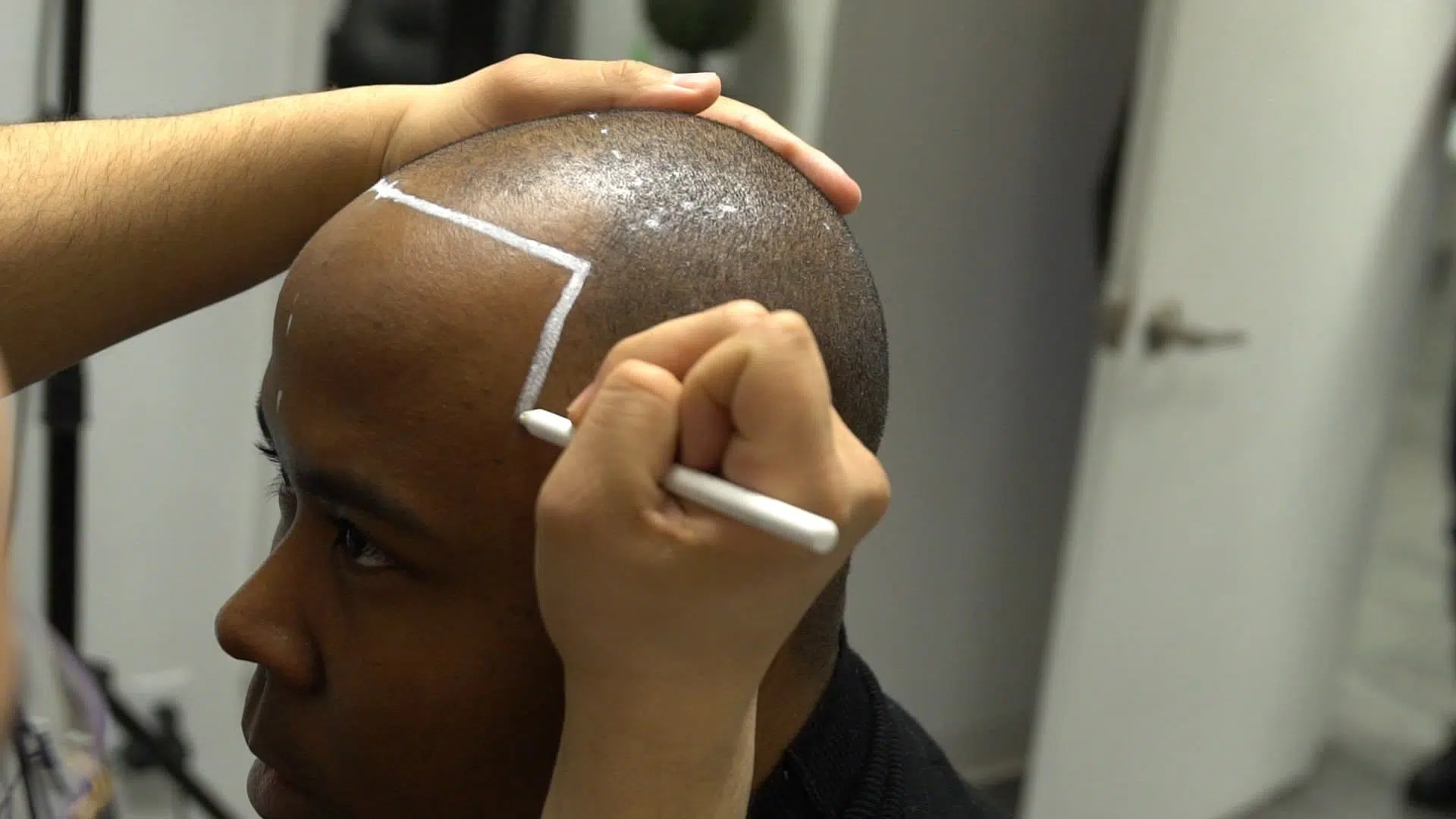In recent years, scalp micropigmentation has gained significant popularity as a solution for hair loss and thinning hair. Often compared to traditional tattooing, scalp micropigmentation (SMP) is a specialized technique that provides a realistic illusion of a shaven head or denser hair. While both tattooing and SMP involve the use of pigments and needles, there are crucial differences between the two. This article aims to shed light on the dissimilarities between traditional tattooing and scalp micropigmentation.
- Purpose and Technique: Tattoos are primarily intended for artistic expression and can encompass a wide range of designs and styles. The process involves injecting ink into the dermis layer of the skin using a tattoo machine, creating permanent designs or images. On the other hand, scalp micropigmentation is specifically designed to replicate the appearance of closely cropped hair follicles or add the appearance of density to thinning hair. It employs a specialized technique where tiny, layered dots of pigment are deposited into the scalp’s epidermis layer, imitating the natural look of hair follicles.
- Equipment and Pigments: Traditional tattooing utilizes a tattoo machine with multiple needles that penetrate deeper into the skin. The ink used for tattoos is often more vibrant and contains a wider array of color options to achieve desired artistic effects. In contrast, scalp micropigmentation employs micro-needles or micro-needling pens that deliver the pigments more superficially into the skin. The pigments used in SMP are specifically formulated to match the client’s natural hair color and create a seamless and realistic effect.
- Longevity and Maintenance: Tattoos are designed to be permanent and can last a lifetime. While the colors may fade over time, touch-ups can be done to maintain the tattoo’s appearance. Conversely, scalp micropigmentation is a semi-permanent procedure. The pigments used in SMP are specifically designed to fade gradually over time, allowing for adjustments and adaptations as the client’s hair color and style may change. Depending on factors such as skin type, sun exposure, and individual body chemistry, SMP typically requires touch-ups every few years to maintain its optimal appearance.
- Aesthetics and Application: Tattoos are known for their artistic designs and the freedom of expression they provide. Tattoo artists can create intricate patterns, vibrant colors, and detailed images. In contrast, scalp micropigmentation is aimed at creating a natural-looking appearance that mimics the appearance of a shaven head or denser hair. SMP practitioners utilize their skills to replicate the size, shape, and color of natural hair follicles, ensuring a seamless and realistic outcome.
- Skin Compatibility and Risks: Due to the different techniques and equipment used, there are varying risks and potential complications associated with tattooing and scalp micropigmentation. Traditional tattoos have a higher risk of infection, allergic reactions, and scarring, especially if proper aftercare instructions are not followed. Scalp micropigmentation, when performed by a skilled practitioner, carries minimal risks. However, as with any skin procedure, there is still a potential for minor complications such as redness, swelling, or slight discomfort. It is essential to choose a reputable professional and follow the recommended aftercare protocols to minimize any risks.
In conclusion, while both tattooing and scalp micropigmentation involve the use of pigments and needles, they serve different purposes and employ distinct techniques. Tattoos focus on artistic expression, while scalp micropigmentation is a specialized technique for replicating the appearance of shaven heads or denser hair. Understanding these differences is crucial when considering these procedures, as it allows individuals to make informed decisions based on their desired outcome and expectations. Consulting with professionals in the field can provide further clarity and help determine the best option for achieving the desired aesthetic results.
